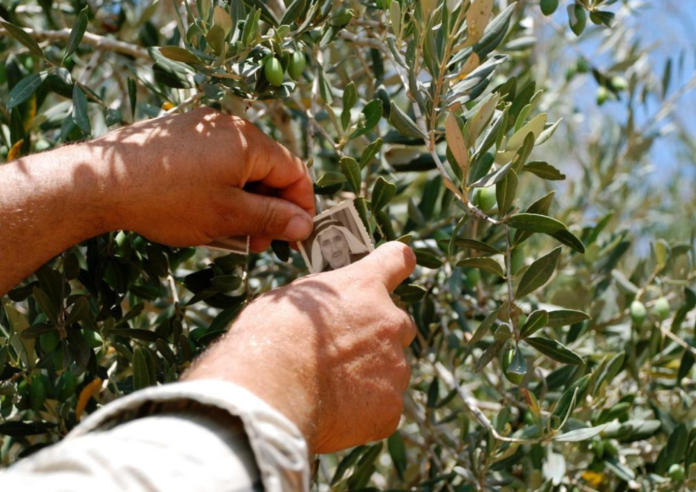Palestinian farmers are at the forefront of challenges that confront farmers worldwide. Challenges range from the perils of agribusiness and corporate seed dominance to settler colonialism, resource appropriation and political turmoil. Palestinians stand as guardians of a rich tradition of land stewardship, of which diligently preserving seeds and the invaluable knowledge embedded within them is one facet. Palestinian heirloom seed varieties face looming threats, with many on the brink of extinction. These seeds carry within their genetic makeup the narratives and resilience of Palestinian indigenous ancestors.
Indigenous seed-saving is a practice that goes far beyond agriculture and has a strong connection with cultural identity and legacy. Not only do seeds supply sustenance, but they additionally serve as a living link to the traditions of the past. They serve as an essential component of the long-lasting cultural identity of many communities around the world. Examining the deep connection between indigenous seed-saving practices and identity contributes to the understanding of how the local community’s resilience can be represented by the preservation of traditional seeds.
Beyond their cultural significance, these seeds offer a lifeline for the future of Palestine, particularly in the face of climate change and the global decline of agrobiodiversity. The urgency to save and propagate these seeds is paramount. They hold the key to both preserving the rich Palestinian heritage and securing survival in an ever-changing world.
The Palestine Heirloom Seed Library: A Fortress Against Agribusiness and Settler Colonialism
At the forefront of seed saving in the region is the Palestine Heirloom Seed Library founded by Vivien Sansour as a means of opposing the dominance of Israeli agribusiness and revitalizing traditional Palestinian agricultural methods. This unique library’s mission is to discover, preserve, and share heirloom seed varieties, characterized by their open-pollinated nature and absence of genetic modification. This initiative serves as an alternative to the corporate seed monopoly and fighting settler colonialism ensuring the continued availability of these valuable seeds. Sansour has preserved distinct Palestinian heirloom seed types, among them her Jazar Ahmar purple carrot and the Jadu’i watermelon, drought-resistant variety originally from the city of Jenin.
Since its occupational history, Israel has perpetuated the ecological alteration and military-driven restructuring of the topography in the occupied Palestinian territories (oPt) to establish additional settlements in the region. Throughout its occupation, Israel has systematically bulldozed orange and olive groves adjacent to the Gaza border fence. Israel further imposed a “buffer zone” along the Gaza fence, making most of Gaza’s agricultural lands inaccessible to Palestinian farmers.
The preservation of Palestinian heirloom seeds, as exemplified by the Palestine Heirloom Seed Library and the tireless efforts of individuals like Sansour, represents more than an agricultural endeavour. It is a moving act of honouring Palestinian cultural heritage from the existential threats of Israeli occupation.
Jaffa’s Citriculture: A Tale of Loss and Unfulfilled Potential
Other crops have also produced important symbolism of shared culture and profound loss deeply rooted in the rich history of Palestine. A symbol of agricultural heritage and economic prosperity, the Jaffa Orange was more than just a well-known produce. It was a cultural icon in the agrarian city of Jaffa. Like other agricultural cities around the Arab Mediterranean, Jaffa’s advancement as a hub of trade and small-scale manufacturing was closely linked to its reliance on agricultural surplus.
In comparison with other regions where agricultural yields came mainly from villages, Jaffa’s agricultural production came mainly from the surrounding belt of urban citrus gardens. These gardens, which had surrounded the walled city since the 18th century, saw significant development in the 19th century, which had a profound effect on the city and its surroundings.
A combination of factors led to the growth of Jaffa’s citriculture. Locally, Arab farmers were instrumental in the development of a unique orange mutation known as Shamouti, which is distinguished by its thick skin and sweet flavour, making it appropriate for long-distance export. Zionist militias later launched concerted attacks against the city’s Arab residents. The organized expulsions began in 1947, shortly after the United Nations Partition Plan for Palestine became public.
As of right now, Jaffa’s citizens remain at risk from colonial gentrification and loss. Jaffa, which was once a thriving centre of modernity and citriculture, is now a sombre witness to great loss and the memory of unrealized potential. Novelist and journalist Ghassan Kanafani provided the most prominent example of this in his 1958 short story, “The Land of Sad Oranges”, where he represented loss during the Nakba with the fruit.
Watermelons as Symbols of Resistance: From Colors to Creative Expression
Watermelons are another powerful symbol of Palestine and are cultivated all over the region, from Jenin to Gaza. Its vibrant colours reflect those of the Palestinian flag: red, green, white, and black. Following the 1967 war, Israel captured control of the Gaza Strip, the West Bank, and East Jerusalem, essentially outlawing the display of the Palestinian flag in occupied territories. It was later prohibited to depict it in artwork. The colours within the watermelon became a powerful tool for protesting Israel’s repression of Palestinian identity. Today, amidst protest restrictions and shadow banning, Palestinians have again creatively turned sliced watermelons into a resilient representation of resistance in opposition to occupation in all forms of media including art, flags and social media.
Heirloom Seeds in a Changing Climate
Heirloom seeds represent the perseverance of history and knowledge in the face of calamities which include political unrest, territorial disputes, and climate change. By safeguarding seeds, the stories and traditions of indigenous communities can be kept on a continuum. The value of these heirlooms extends to the global level, offering options for addressing contemporary challenges, including climate change and the erosion of agrobiodiversity.
As an uncertain future awaits, heirloom seeds provide a bridge to our past, embodying the resilience and resourcefulness of generations that have navigated adversity. In preserving these seeds, the tribute to the legacy of Palestinian farmers who have cultivated the land for centuries is evident. It is an act of resilience, cultural preservation, and a statement that in the face of change, the seeds of history will continue to prosper.



